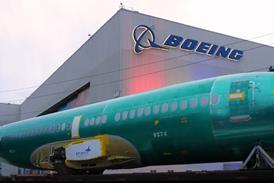GRAHAM WARWICK / WASHINGTON DC
Successful delayed first flight unlocks financing required to move towards certification
Eclipse Aviation has begun flight-testing its Eclipse 500 personal jet, a milestone which triggered the release of $25 million in customer deposits previously held in escrow, pending first flight. The company is considering launching another financing round following the successful first flight on 26 August, says chief executive Vern Raburn.
The aircraft completed a 62min first flight from Albuquerque, New Mexico, after a month-long delay while Eclipse struggled to get the Williams International EJ22 turbofans to start reliably and predictably. Raburn blames the high density altitude at Albuquerque: "The engines were very stable in flight," he says.
Density altitude for the flight was over 7,000ft (2,150m). "That's unusual for a first flight," says Raburn. "But take-off distance was where we said it would be. We are happy with the handling and stick forces were as expected." Flaps remained up and gear down during the first flight. The second flight followed two days later.
The first aircraft is restricted to 18,000ft because it is not pressurised, and to 220kt (400km/h) because Eclipse has not conducted the ground-vibration testing needed for flutter clearance. This will be completed on the second, pressurised, fully conforming aircraft, which is expected to fly in November or December.
Eclipse decided to "descope" the first aircraft to reduce the funding required to reach first flight, which it hopes will attract the additional financing needed to complete certification. The first aircraft was built on production tooling and is "100% type designed, but not 100% conforming", says Raburn. It will be used for around 100h low/medium-speed testing, but the data cannot be used for certification.
Much of the avionics hardware is in the first aircraft, including the computer, integrated sensors, full-authority digital engine control and primary flight display. The autopilot, autothrottle and multifunction display are not fitted, and a lot of the avionics software functionality is not installed, but a flight-test data acquisition system is.
Raburn says major tasks include integrating the compact pressurisation and air-conditioning system, and testing the automatic flight-control system. Certification of the EJ22 engine is due seven months ahead of aircraft approval, allowing room for slippage, he adds.
Williams is due to begin flying the candidate type design engine this week on its Sabreliner testbed.
Source: Flight International























